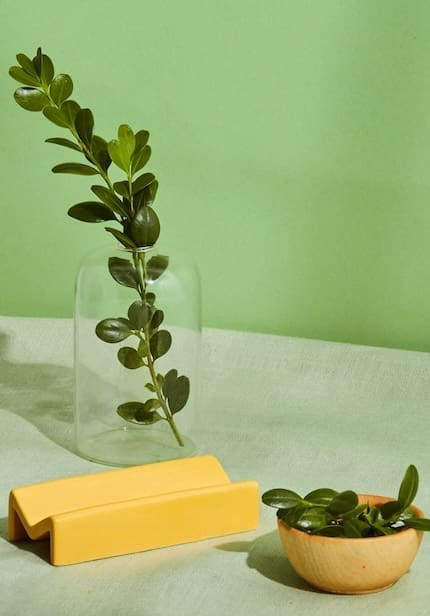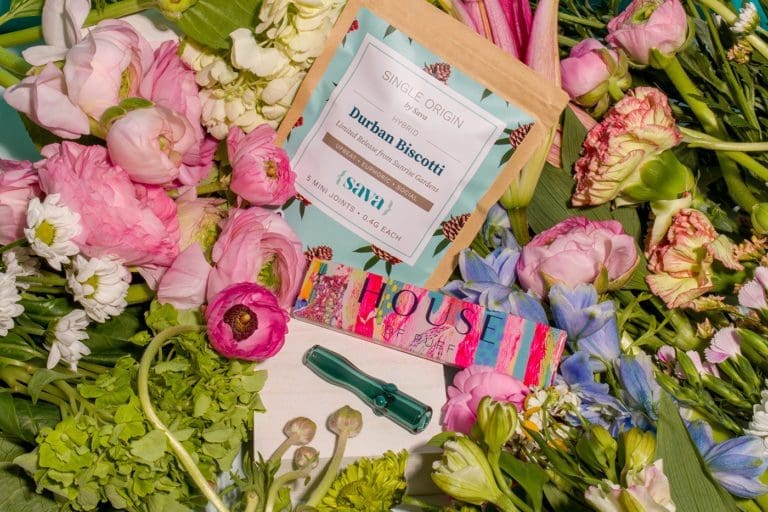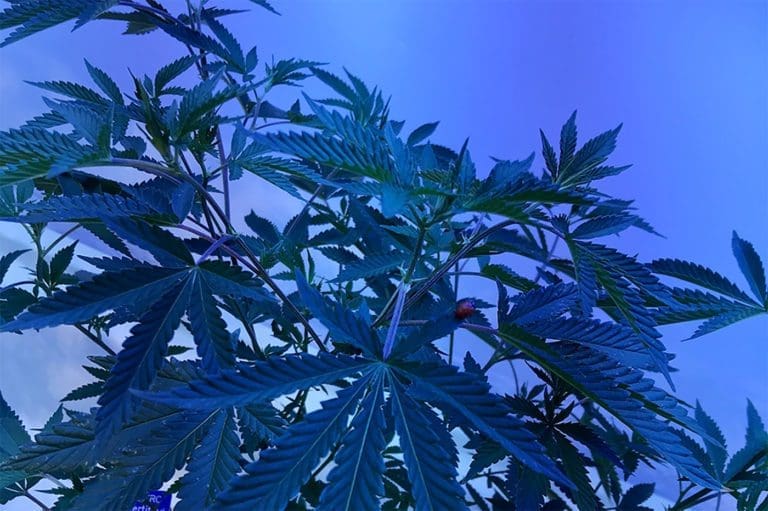I Can Grow Myself Flowers: Everything You Need to Grow Cannabis at Home
- The must-have tools required to grow cannabis at home are super affordable and easy to find
- Having the right setup is essential for maintaining the health of your final flower
- Learn everything about setting up a home grow, from soil and lights to humidity and pH
9-minute read
Rooted in Success
Smoking the cannabis you’ve grown yourself could be one of the most rewarding experiences you can enjoy. Cannabis cultivation is more than just a hobby. It’s a great way to save money and have a more personal connection with your flower. It’s also surprisingly simple. While it might seem intimidating at first, it’s actually super easy to set up and grow cannabis at home. Here’s the essentials you’ll need to get started on your homegrow. From seed to soil, secrets and strategies, keep reading to learn more.
Indoor vs. Outdoor
Before you grow cannabis at home, you need to know where you’re growing it so that you know what supplies to get. Depending on where you live, you might have the choice between the controlled environment of indoor growing and the natural embrace of outdoor cultivation. In apartments and homes with limited outdoor space, the decision to grow indoors is made for you. Both options have their own challenges and rewards, and understanding the differences will only help you in growing the perfect flower.
Indoor
In addition to the ultimate discretion, you have the freedom to control the conditions when you grow cannabis indoors. Light, temperature, and humidity can all be meticulously managed from the comfort of an indoor setup year-round. This is especially useful for those living in regions with harsh climates or if you don’t have the outdoor space. This kind of precision also allows you to perfectly tailor the environment to the needs of your cannabis plants. However, it does come with certain considerations like indoor space and the need for specialized equipment like grow lights or timers.

Outdoor
For those who prefer a more natural approach, and live in an environment where it’s possible, you might want to grow cannabis outdoors. Outdoor cannabis cultivation harnesses the power of the sun and minimizes environmental impact. It’s ideal for those with outdoor space and an affinity for sustainability. Outdoors, you can cultivate cannabis with minimal specialized equipment. But you’ll have to account for environmental factors like chemicals, pests, and potential diseases. Cannabis is an incredible bioaccumulator. So, while it’s great at absorbing nutrients from the soil, it can also draw in chemicals and pesticides. Things you don’t want to ingest. Because of this, organic pest and disease management methods are usually preferred. Organic pest control options include treating the plant with neem oil and employing beneficial insects.
Necessary Supplies
Once you’ve settled on where you’ll grow your plant, it’s time to assemble your supplies. The items you need to grow cannabis are all pretty easy to find—and even better, you can get most of them for less than $10! Your local gardening store will have most of what you need, like, a planter, watering can, hygrometer, pH tester, pruning shears, grow lights, gardening gloves, and soil. Or you can take advantage of the convenience of online shopping. Either way, it’s not difficult to collect the tools and materials you’ll need.
Feminized Seeds—Nothing But a She Thing
The smallest component of your homegrow setup makes the largest impact. When you’re choosing seeds to grow cannabis, you want ones that yield the best outcome possible. In the world of cannabis, the female reigns supreme. Male cannabis plants are responsible for producing seeds and pollinating female plants. So, they don’t flower into full buds themselves. Instead, female cannabis plants produce the buds that contain most of the cannabinoids and resin-y goodness we love.
She’s The Moment
As a result, female plants have much higher levels of THC and other cannabinoids than their male friends. So, you’ll definitely want to buy feminized seeds. That way, you can ensure you’re growing robust, resinous flowers. If you’re not sure where to purchase seeds, online seed banks like Royal Queen Seeds USA, Rocket Seeds, Seed City, and Crop King Seeds are excellent and reliable sources.
Strains
Finding the right seeds to grow cannabis goes far beyond just buying some feminized seeds. The strain or strains you decide to grow will impact the final outcome. There are a lot of factors to think about when selecting the perfect strain for you. Are you looking for something to ease you into relaxation mode, or do you prefer one that energizes and uplifts? If you’re not sure which strain caters to your needs, let our strain guide help you decide.
Starter Strains
For beginners, Blue Dream—a strain perfect for decompressing and pain relief—is known as one of the easiest strains for beginners to grow. For a more energizing choice, try Gorilla Glue #4. It’s another easy-to-grow strain that yields huge buds. And, if you’re growing indoors, Northern lights is an especially great strain to try. It has one of the quickest flowering cycles, so you can harvest your goods even sooner.
Soil
Different strains thrive in different types of soil. So, it’s essential to understand your plants’ needs when you grow cannabis. The same way that the right diet nourishes your body, the soil and nutrients you give your plant will profoundly impact their growth and overall well-being. So, providing the right conditions at each stage of growth is crucial for maintaining the health of your plants. Some strains thrive in light, loamy soils, while others prefer the moisture of heavier soils. If you’re growing outside, you might need to adjust your strain to your soil. Or, if your heart’s set on a strain that needs a different kind of soil, you can also hit the garden center to change its composition.
Soil vs. Hydroponic
If you’re growing indoors, a hydroponic setup eliminates soil altogether. Instead, you grow your plants in a nutrient-rich water solution, which delivers food directly to their roots. As a result, this method can accelerate growth and deliver higher yields. That said, hydroponic setups require some specialized equipment and more technical know-how. So, we suggest that you start au naturel. You can always level up to hydroponics once you’ve already gotten your green thumb on.
Nutrients
Regardless of whether you’re growing inside or out, you’ll have to choose between organic and synthetic nutrient solutions. Each has its own pros. Organic nutrients come from natural sources. They improve soil health, promote beneficial microbial activity, and contribute to the overall terpene and cannabinoid profiles of your cannabis. Alternatively, synthetic nutrients are designed to provide precision and control over nutrient concentrations. They’re also more readily absorbed by the plant.
The Fine Print
Your plant will grow faster than with organic nutrients. But there can be some drawbacks, too. Organic nutrients are generally more expensive than synthetic ones. And since the plants grow slower, it makes organic nutrients less cost-effective. However, synthetic nutrients are much harsher on the environment and can alter the taste of the resulting flower. Also, because plants grow faster with synthetics, it’s much easier to accidentally oversupply nutrients and burn out your entire plant.
Lights
If you’re growing indoors and don’t want to put your plants on your windowsills, you’ll need an artificial light source to replicate the sun’s spectrum. Your choice of grow lights and how you arrange them can have a significant impact on your plants’ growth. The three main types of grow lights are LED, HID, and fluorescent lights.
LEDs vs. HID
LEDs offer energy efficiency, spectrum customization, and reduced heat. But, they’re also more expensive. HID lights are generally considered to be the most consistent because they have the highest amount of light penetration. But that sacrifices efficiency and generates more heat. So, you might have to compensate by cooling your plants’ environment. Fluorescent lights are the most budget-friendly option. They’re more energy efficient and perfectly suited for smaller spaces. But, their lower light intensity (compared to LED or HID lights) can result in slower growth and lower yields.

Don’t Be a Basic B—Get a pH Tester
Another factor you’ll have to consider when you grow cannabis at home is the pH of the soil. If we head back to science class for a minute, you’ll remember that pH is a measure of water acidity. Cannabis consumes a lot of water. So, pH levels in your soil can really impact cannabis growth and nutrient absorption. Cannabis plants thrive in slightly acidic soil. Use your pH tester to make sure that your soil has a pH of 6 to 7.
Why pH Matters
If the pH is out of balance, your plants won’t be able to access essential nutrients, leading to stunted growth, nutrient deficiencies, and even toxicity. If the pH is too high (alkaline), you can lower it by adding a pH-down solution, like sulfur. Alternatively, if the pH is too low (acidic), pH-up solutions, like dolomitic lime or limestone, can help raise the pH.
Hygrometer
In addition to the pH, when you grow cannabis, it’s also important to monitor the humidity and moisture in and around the soil. Properly hydrating a healthy cannabis plant goes beyond simply watering it. That’s where your hygrometer comes in. This $10 gadget precisely gauges humidity levels in your grow space so you can make any necessary adjustments.
How Humidity Helps and Hurts
Humidity doesn’t just affect those of us with frizzy hair. Maintaining the right humidity levels is also critical for preventing things like mold and mildew from growing on your plant. Too much humidity can create a breeding ground for these crop killers. To ward against them, you might need to increase your ventilation, use a dehumidifier, or adjust the temperature around your plants. On the other hand, excessively dry air can stress your plants and hinder their growth. A humidifier can give you more control over hydration levels. Or, for a cheaper alternative, you can also place water-filled trays, or hydro trays, near your plants.
Grow tent
If you plan to grow cannabis indoors, you might also want to use a grow tent. You don’t need one. But grow tents give you more control over your plants’ environment. They help maintain stable temperature and humidity levels—essential factors for healthy plant growth. They also offer discretion, contain odors, and keep your cultivation more private. Grow tents often come with reflective interiors that maximize light distribution. But, of course, the cost and space considerations might outweigh the benefits for you, especially if you have the space to control your plants’ environment without a tent.
All The Odds and Ends
Don’t forget about all of the odds and ends that’ll help you grow cannabis at home. Pruning shears are essential for shaping and maintaining your plants as they grow. It might seem counterintuitive, but careful pruning and trimming will actually help your plant to thrive and grow larger. For a chic addition to your setup, get yourself a cool, vintage watering can and some fun, patterned gardening gloves.
Homegrown Happiness
Whether you’re nurturing your first seedling or you’re a long-time, self-sustained stoner, having the right setup for your homegrow is essential. Having all the right tools at your disposal will set you up for success. And understanding how pH and hydration work will better equip you to make any necessary adjustments as you go. You’re absolutely going to love harvesting and smoking that first flower. So, snag your tools, set up, and get growing!







